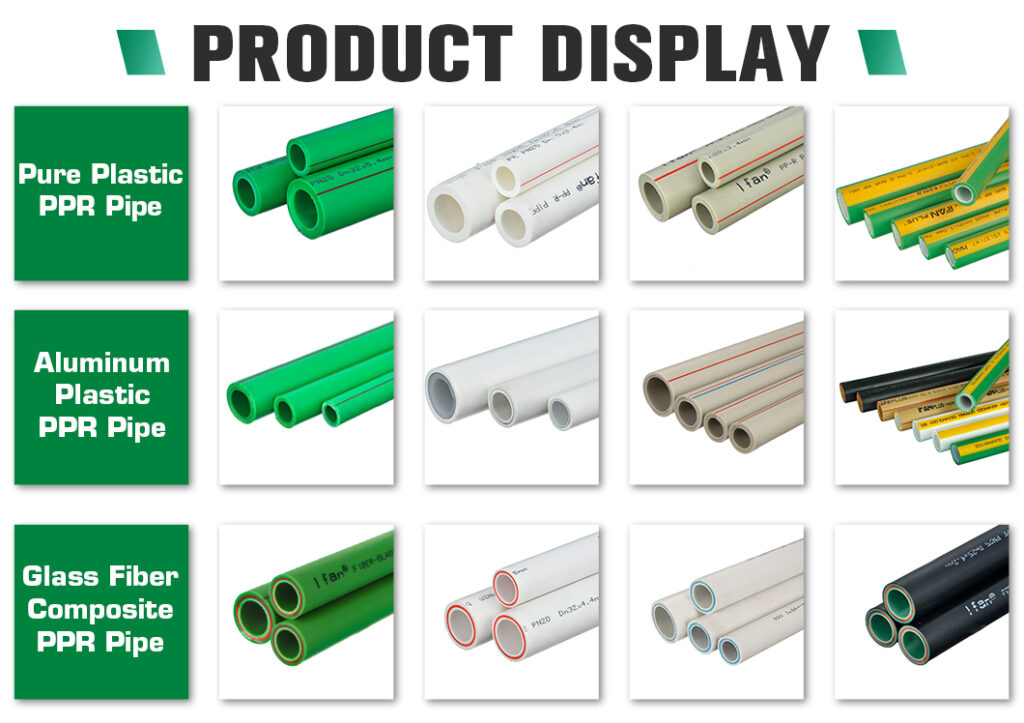PPR Piping: A Versatile Solution for Modern Industries
Polypropylene Random Copolymer (PPR) piping has emerged as a versatile and efficient solution for a wide range of industries. This comprehensive guide explores the world of PPR piping, including its composition, key characteristics, and diverse applications.IFAN factory 30+ years manufacture experience support color/size customization support free sample.Welcome to consult for catalog and free samples.This is our FacebookWebsite: www.facebook.com.
Introduction to PPR Piping
Hongjin Mould PPR, or Polypropylene Random Copolymer, is a thermoplastic material known for its exceptional properties. It’s widely used in construction, industrial settings, and agriculture due to its versatility in conveying various fluids. PPR pipes are composed of a copolymer of propylene and ethylene, which makes them suitable for both hot and cold liquid transport.
Key Characteristics of PPR Piping
PPR piping possesses several essential characteristics that make it a popular choice across various applications:
1. Corrosion Resistance
One of Hongjin Mould PPR’s primary advantages is its resistance to corrosion. This makes it ideal for transporting aggressive chemicals, potable water, or industrial effluents, ensuring the purity of the conveyed fluids.
2. High Thermal Stability
PPR pipes exhibit remarkable thermal stability, allowing them to handle both hot and cold water systems. They can withstand temperatures up to 90°C (194°F), making them suitable for plumbing and heating applications.
3. Durability
PPR pipes are known for their durability. They can withstand high pressure and are resistant to impact, ensuring a long lifespan and minimizing maintenance requirements.
4. Low Thermal Conductivity
PPR’s low thermal conductivity minimizes heat loss, contributing to energy efficiency in heating systems.
5. Hygienic Properties
PPR pipes are considered safe for transporting potable water due to their non-toxic, lead-free, and corrosion-resistant nature.

Applications Across Industries
PPR piping finds utility in various industry sectors:
1. Construction and Plumbing
In construction, PPR pipes are widely used for water supply, heating, and sanitation systems. Their durability and hygienic properties make them ideal for plumbing applications in residential and commercial buildings.
2. Industrial Sector
PPR piping plays a crucial role in industry, transporting chemicals, industrial fluids, and wastewater thanks to its corrosion resistance and high-temperature stability.
3. Agriculture and Greenhouses
Agriculture and greenhouse operations rely on efficient irrigation systems. PPR pipes offer durability and resistance to chemical fertilizers and pesticides, making them suitable for agricultural water supply.
4. Swimming Pools and Spa Facilities
PPR piping is essential for swimming pools and spa facilities, ensuring the continuous and hygienic circulation of water.
5. Gas Transportation
In regions where safety regulations and material standards permit, PPR pipes used for gas distribution.
6. Infrastructure and Municipal Projects
PPR piping commonly used in municipal projects, including the construction of water treatment plants and sewerage systems.
7. Geothermal Applications
In geothermal heating and cooling systems, PPR pipes favored for their ability to withstand high-temperature variations.
8. Food and Beverage Industry
The food and beverage industry uses PPR piping for fluid transportation due to its non-toxic, non-corrosive, and hygienic properties.
Maintenance and Care
To ensure the longevity and efficiency of PPR piping, regular maintenance is crucial. This includes periodic inspections for leaks, ensuring proper joint integrity, and addressing any signs of wear or damage.
Conclusion
PPR piping is a versatile, durable, and efficient solution that serves diverse purposes across different industries. Its unique properties, including corrosion resistance, high thermal stability, and non-toxic nature, make it an attractive choice for various applications. Understanding the advantages and applications of PPR piping is key to maximizing its potential in diverse sectors. Whether in construction, industry, agriculture, or municipal projects, Hongjin Mould PPR piping continues to provide reliable and sustainable solutions for fluid transport.

